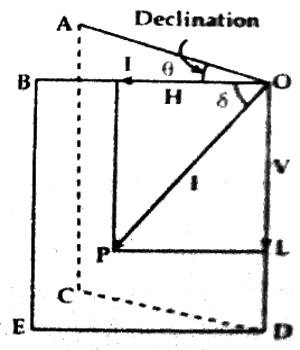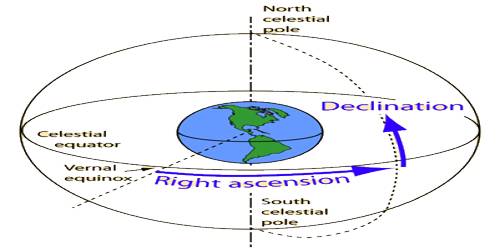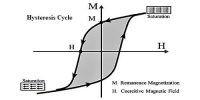Declination: Elements of Geomagnetism
Declination is the angle on the horizontal plane between magnetic north and true north. The earth’s magnetic poles and geographic poles do not coincide. Consequently, the magnetic meridian plane and geographic meridian plane at a place may not coincide. One meridian intersects the other meridian. As a result, an angle is created between them. This angle is called declination of the geomagnetism.
Definition: The angle between the magnetic meridian plane and the geographic meridian plane at a place is called the declination of the geomagnetism.
It is denoted by ‘θ’ and is measured in degree. The declination is different in different parts of the earth. In the figure, the geographical meridian has been represented by AODC and magnetic meridian has been represented by BODE at the location O. So, ∠AOB is the declination at that place.

At Any place, if the north pole is in the east making an angle θ with the geographic axis, then declination at that place is θ0E or θ0 East and if it is θ0 West, then the declination is θ°W or θ° West.
Example: Suppose the declination of Newyork City is (1/2)0 East. This statement means that the axis of a freely moving magnet makes an angle (1/2)0 with the geographic meridian from the magnetic meridian and its north pole is in the East of the geographic axis.
















